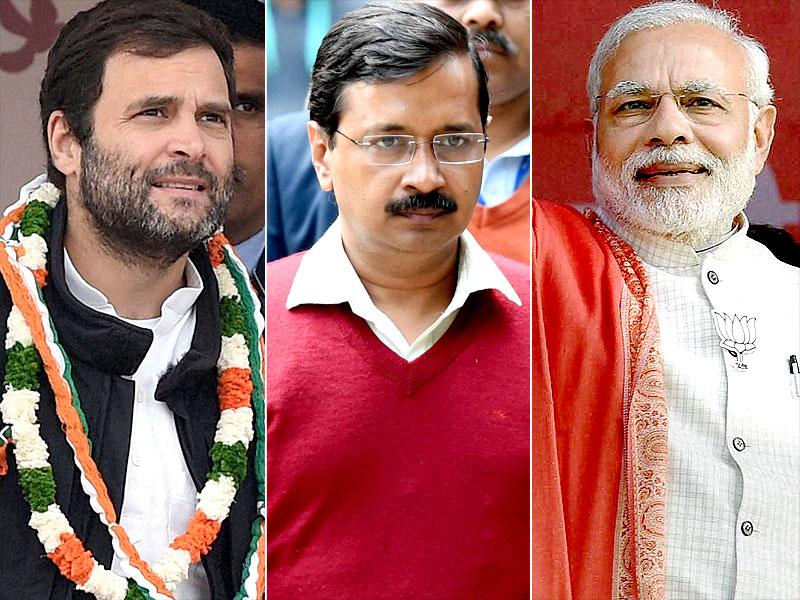As a political analyst, I find the upcoming Delhi Assembly elections shaping up to be a fascinating battle for survival and dominance. The AAP and BJP seem locked in a heated contest, yet recent opinion polls send mixed signals. Some predict a BJP victory, while others favour AAP. However, the lack of transparency in polling methodologies raises questions and invites skepticism.
Arvind Kejriwal’s AAP, which once redefined Delhi’s politics with its anti-corruption and pro-governance agenda, now faces significant challenges. Allegations of corruption, including the infamous liquor scam and the lavish renovation of the Chief Minister’s residence, Sheesh Mahal, have dented its once-pristine image. Internal dissent further complicates the party’s prospects, raising doubts about its ability to maintain cohesion amidst rising voter discontent.
Despite these setbacks, AAP retains a base of loyal supporters, thanks to its welfare-driven initiatives like free electricity, water, and healthcare. These schemes have been pivotal in cementing its appeal among the middle and lower-middle classes. However, the sheen of these programs seems to be wearing off as accusations of inefficiency and mismanagement grow louder. The deteriorating infrastructure, rising pollution levels, and the unfulfilled promise of cleaning the Yamuna River have fuelled public dissatisfaction.

Meanwhile, the Congress party remains a shadow of its former self in Delhi. Once the city’s dominant political force, it now struggles to make a meaningful comeback. Efforts like padyatras and issue-based campaigning have done little to revive its waning appeal. The party’s inability to capitalize on AAP’s controversies and anti-incumbency sentiment has left it floundering in third place, with its support base continuing to erode.
In stark contrast, the BJP seems to have gained significant traction. Leveraging AAP’s perceived failures, the BJP has focused on issues like corruption and poor governance, resonating with a segment of the electorate seeking change. Their outreach initiatives, such as Parivartan Yatras, have strengthened their grassroots connections, particularly in areas neglected by AAP. The BJP’s emphasis on Delhi’s infrastructure woes and environmental challenges appears to be striking a chord with voters.
However, the BJP faces its own challenges. The lack of a strong, localized leadership in Delhi could hamper its ability to fully capitalize on the anti-incumbency wave. While national leaders and high-profile campaigns generate enthusiasm, Delhi voters often look for relatable, local faces to address their specific issues.
Adding to the intrigue are smaller parties like the BSP, RJD, JD(U), and the Azad Samaj Party. These parties, though unlikely to win significant seats, could influence the election’s outcome by splitting votes in key constituencies. Their ability to target niche demographics and localized grievances complicates the electoral calculus for both AAP and BJP.
AAP’s internal dynamics also warrant attention. While Kejriwal remains the party’s undisputed face, his leadership is increasingly scrutinized. Allegations against him and other senior leaders have tarnished AAP’s reputation as a clean and transparent party. Atishi’s recent elevation as Delhi’s Chief Minister—the youngest and only the third woman to hold the position—was a bold move, but whether it’ll sway voters remains uncertain.
The upcoming election is not just about governance; it’s a referendum on AAP’s decade-long rule and its vision for Delhi. While welfare schemes have been AAP’s cornerstone, voters now demand more—better infrastructure, cleaner air, and tangible progress. For the BJP, this election is an opportunity to dismantle AAP’s dominance and establish itself as a credible alternative.
As I see it, the BJP has effectively leveraged AAP’s vulnerabilities while positioning itself as a force for change. However, the path to victory is not straightforward. The party must address its leadership gap and offer a clear, localized vision for Delhi. Meanwhile, AAP must confront its shortcomings head-on, rebuild public trust, and showcase its achievements beyond welfare schemes.
The multi-cornered contest, with Congress and smaller parties in the fray, adds layers of complexity. While a direct BJP-AAP fight would have been more predictable, the presence of additional players creates a volatile electoral landscape. In such a scenario, vote shares and margins could decide the winner, making this election one of the most closely watched in Delhi’s history.
Ultimately, whether this election becomes AAP’s last hurrah or a fresh mandate depends on how effectively the parties connect with voters. As a political analyst, I’m eager to see who rises to the occasion and delivers a vision that aligns with Delhi’s aspirations.






